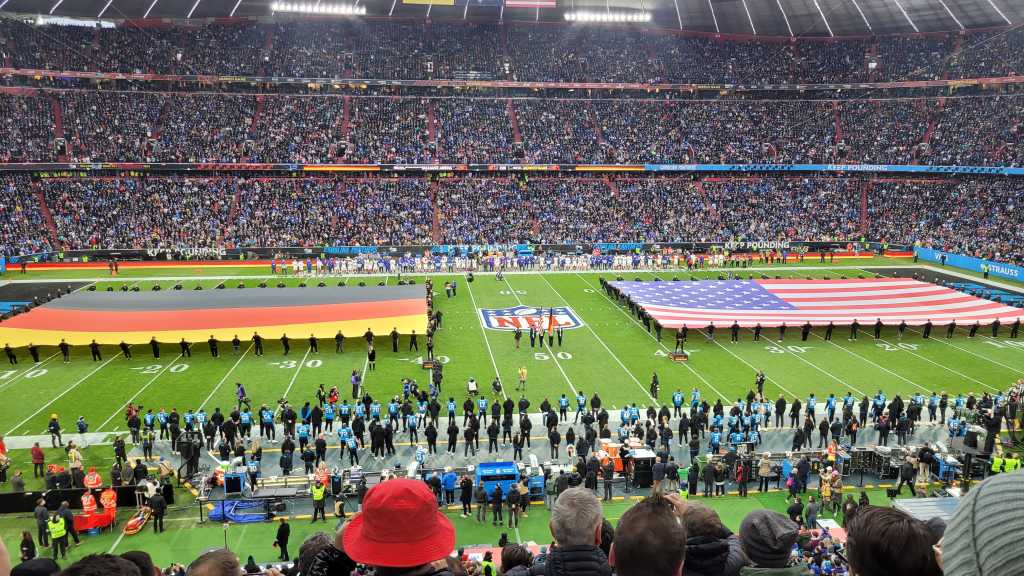The NFL requires different camera positions than the Bundesliga. Therefore, only part of the existing infrastructure can be used.
Hill
Terabits of data and NY command center
When asked how many gigabits/s the fiber optic network now has, Patel can only laugh. “We’re talking about terabits of speed here,” the network specialist explains. A look at the front of the stadium shows why Patel needs these speeds. This is where the giant trucks of the TV networks that are broadcasting the game to the USA are parked. And no one is talking about full HD anymore – UHD, i.e. 4k, is now part of good sound and picture.
But why all the effort? After all, Munich’s Allianz Arena is one of the most modern football stadiums in Europe. And its IT infrastructure with modern Wi-Fi, license plate screening in the parking garages, electronic access systems, networked cash register systems, etc. is nothing to be ashamed of.
Patel admits that infrastructure sharing is indeed practiced in stadiums such as the Allianz Arena. And in the Allianz Arena’s data center, in addition to the stadium’s permanently installed 19-inch racks, there are also a few half-size, rollable racks.
However, the IT infrastructure requirements for soccer and American football are too different. “It starts with the camera positions, which are in completely different places in football, so the pre-installed infrastructure is of no use to us,” explains Amendolia.
“We also need a fast connection to the Art McNally GameDay Central Command Center in New York, because that’s where the NFL officials, who are comparable to the German video referees, are based,” Patel points out, explaining another special feature. And on the sidelines, there are small blue trolleys containing tablets for the referees on site. They can use these to analyze unclear game situations in more detail using VR/AR and consult with their colleagues in New York in real time.
Also on the sidelines are IP phones that are controlled by Cisco Call Manager. These allow the team coaches to contact the tacticians and other experts in the backend.

